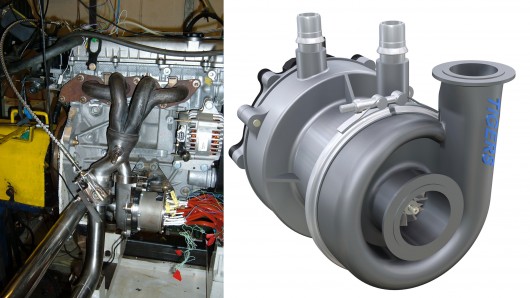CPT’s Turbo-generator Integrated Gas Energy Recovery System (TIGERS) uses the same switched reluctance technology as its production-ready VTES electric supercharging and SpeedStart stop-start systems, though both of those systems are developed to the stage of commercialization. CPT estimates it will take five years to bring TIGERS to market.
VIPER research project
TIGERS is now being added to UK’s Technology Strategy Board's “Vehicle Integrated Powertrain Energy Recovery“ (VIPER) research project, run by the UK’s Technology Strategy Board. The VIPER project will build on CPT’s involvement in the Ricardo-led "HyBoost" program, which is similarly part funded by the TSB.
The new VIPER project aims to show how a reduction in CO2 emissions of 4.5 per cent can be achieved over a broad range of vehicles in part by optimizing the control of heat energy from conventional gasoline and diesel engines. The project is being led by Jaguar Land Rover with consortium members including Ford, IAV, BP, University of Nottingham and Imperial College London.
The Technology Strategy Board (TSB) anticipates that VIPER technologies could be applied to the majority of new vehicles before the turn of the decade, though it will be interesting to see what percentage of the vehicles on our roads still contain an internal combustion engine a decade from now.
Several factors are expected decrease supply and increase demand of oil, hence oil prices are almost certain to be astronomically expensive by then thanks to the anticipated growth of car sales in developing superpowers such as China, India, Russia and Brazil.
“The VIPER project builds on our exhaust gas energy recovery work already underway for the HyBoost programme,” says CPT engineering director Guy Morris. “HyBoost also includes our VTES electric supercharger. There’s enormous synergy in the integration of these and other micro-hybrid technologies such as SpeedStart; the mild electrification of gasoline and diesel engines can produce highly efficient vehicles able to achieve significant fuel savings with CO2 emissions of less than 95g/km for the average family saloon.”
Copyright © gizmag 2003 - 2010 To subscribe or visit go to: http://www.gizmag.com
